E, intanto, sono passati sedici anni: sedici anni di processi, da un’aula di giustizia all’altra. Le stesse facce che resistono, tranne quelle che, nel frattempo, non hanno rinunciato, ma se ne sono andate. Sono stati sedici anni indispensabili, in cui si è ricostruita l’epopea dell’amianto: un lungo pezzo di storia economica, industriale e sociale proiettata dal microcosmo di Casale Monferrato al macrocosmo mondiale. E in questa ricostruzione tutti siamo cresciuti. Non siamo più quelli del 2009, quando iniziò il primo Maxiprocesso Eternit. No. Abbiamo imparato, come dire, a conoscere e a conoscerci. È stato utile. Sì, è stato utile alla collettività casalese (che ha scoperto cose che non avrebbe mai potuto sapere se non fossero state tirate fuori con certosina diligenza dallo sforzo investigativo, prima, e, poi, dal confronto tra testimonianze, documenti, consulenze tecniche) e utile pure a lei, Signor Schmidheiny (che non avrebbe potuto conoscere questa gente addolorata, dignitosa e munita di forza d’animo). E, allora? Adesso che facciamo? Lasciamo tutto com’era? Come se questi sedici anni non fossero trascorsi? No, dobbiamo trovare un senso: si chiama cura per guarire dal mesotelioma, a Casale e in tutto il mondo. Lei lo può fare, signor Schmidheiny: investa in una casa farmaceutica, integri e renda risolutivo lo sforzo che molti ricercatori già stanno facendo. È il suo più grande riscatto etico. Secondo me, lo deve fare. Sa, Signor Schmidheiny, che cosa sto pensando (e spero)? Che lei adesso ci stia pensando (davvero).
Delle oltre seicento pagine scritte dalla Corte d’Assise d’Appello di Torino per spiegare i motivi che l’hanno fatta decidere di condannare a nove anni e mezzo di reclusione Stephan Schmidheiny – riconosciuto colpevole di omicidio colposo per i casalesi morti di mesotelioma – la metà comprendono le schede contenenti la dettagliata analisi di ogni singolo caso: ogni vita spezzata dall’amianto, soffocata dalla «puvri», come la si chiama da queste parti. E, se dici «puvri», qui tutti capiscono.
Non per tutte le vittime, secondo la Corte, si è potuto stabilire che la malattia ha avuto origine dalla condotta criminosa dell’imputato. Perché?
- Talora perché le diagnosi di mesotelioma sono state ritenute «probabili» e non «certe» (nelle aule di tribunale bisogna avere i nervi saldi per non scoppiare a piangere quando senti dire che la diagnosi è incerta; chi ha perso qualcuno sa come sono andate le cose: la sentenza l’ha già vista scritta prima in una cartella clinica e poi su una lapide!)
- Talora perché non si è riusciti a stabilire, oltre ogni ragionevole dubbio, che le fibre respirate nel decennio tra il 1976 e il 1986 (quando Schmidheiny era a capo dell’Eternit) siano state determinanti nel causare il mesotelioma
- Talora perché chi si è ammalato abitava oltre i due chilometri dallo stabilimento Eternit, che si trovava tra le case del popoloso quartiere Ronzone e a ridosso del centro storico cittadino.
In sintesi, la Corte d’Assise d’Appello, nel decidere quali casi di morte (indicati nel capo d’accusa) siano, a suo giudizio, imputabili alla condotta di Schmidheiny (e per i quali lo ha condannato) e quali non siano a suo avviso a lui riconducibili (per i quali lo ha assolto), li ha filtrati a uno a uno attraverso una serie di criteri:
- diagnosi di mesotelioma
- individuazione del nesso causale
- rilevanza delle fonti alternative concorrenti (cioè, i siti contenenti polverino o scarti d’eternit presenti nei sottotetti, nelle strade, nei cortili, individuati nei dintorni dei domicili delle vittime)
- ha escluso di ricondurre la causa del mesotelioma alla gestione dell’Eternit nei casi in cui la distanza tra l’abitazione e lo stabilimento superasse i 2000 metri
* * *
Nell’analisi che ci apprestiamo a fare, prendiamo in considerazione i punti cruciali che hanno sviluppato ampio dibattito e drastiche contrapposizioni nel processo Eternit Bis. Era partito come fascicolo unico, incardinato dalla procura della Repubblica di Torino con una contestazione di omicidio doloso (cioè, volontario) per centinaia di morti di mesotelioma imputate all’imprenditore svizzero Stephan Schmidheiny. La sua famiglia (ed egli stesso) per decenni, in Italia e in diversi Paesi, ha gestito l’Eternit, tra le maggiori industrie del mondo impegnate nell’estrazione e produzione di manufatti con amianto.
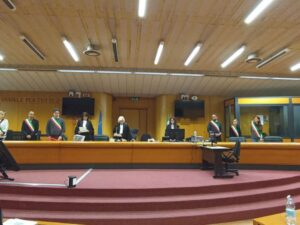
Proveremo a condurre questa analisi seguendo i ragionamenti dei giudici torinesi che hanno replicato alle doglianze espresse sia dalla procura che dalla difesa nelle impugnazioni della sentenza di primo grado emessa dalla Corte d’Assise di Novara il 7 giugno 2023. Lo faremo riportando stralci testuali delle motivazioni depositate dalla Corte d’Assise d’Appello il 14 ottobre scorso (la lettura del verdetto era avvenuta il 14 aprile 2025).
Questi i punti di approfondimento:
- posizione di garanzia dell’imputato
- elemento soggettivo
- l’inquinamento prodotto dallo stabilimento e dalle fonti alternative
- nesso causale e leggi di copertura
POSIZIONE DI GARANZIA
Semplificando: era Stephan Schmidheiny che decideva se, quali e quanti investimenti erano da fare per mettere in sicurezza l’ambiente lavorativo interno ed esterno? Era lui che ordinava ai dirigenti come comportarsi, come agire e cosa dire nei rapporti con lavoratori, sindacati, politici, giornalisti? In sostanza: era lui il capo dell’Eternit?
La Corte d’Assise d’Appello scrive che più dati probatori «convergono nell’indicare un modello organizzativo verticistico che fa capo all’attuale imputato, il quale non solo scelse di proseguire l’attività produttiva pur nella consapevolezza della pericolosità della sostanza trattata, ma si ingerì in via continuativa nella gestione degli stabilimenti italiani, tra cui lo stabilimento di Casale, onde assicurarsi che a livello locale venissero attuate le strategie di politica aziendale decise a livello centrale, con particolare riferimento della gestione del rischio da esposizione ad amianto».
In altre parole sì, Stephan Schmidheiny era il capo che decideva e ordinava il da farsi.
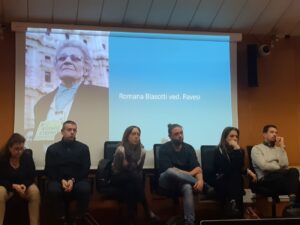
Tra gli argomenti a riprova della sua gestione diretta, i giudici torinesi fanno riferimento:
- al pluricitato congresso di Neuss, nel 1976, cui furono convocati da Schmidheiny i massimi dirigenti mondiali di Eternit, che rimasero choccati da quanto il capo riferì circa la pericolosità dell’amianto
- e al successivo «manuale operativo AUSL 76, redatto a seguito dell’incontro di Neuss, contenente «chiare e univoche indicazioni operative mediante la definizione delle risposte da utilizzare a seconda del caso specifico»: cioè come i direttori degli stabilimenti dovevano rispondere a chi faceva domande scomode del tipo «perché continuate a produrre con amianto nonostante sia noto che è pericoloso? cosa fate per proteggere i lavoratori e i loro famigliari? perché usate ancora l’amianto blu?». Le risposte da dare andavano da «l’amianto cemento può essere considerato senz’altro un materiale non pericoloso; il fattore decisivo è il fumo delle sigarette; non c’è alcun pericolo per le famiglie».
ELEMENTO SOGGETTIVO
La domanda è: la condotta dell’imputato è stata dolosa o colposa?
Cioè: è responsabile di omicidio volontario (come ha contestato la procura e che su questa doglianza aveva fondato il principale motivo di impugnazione della sentenza di primo grado) o colposo?
La Corte d’Assise di Novara aveva riqualificato il reato da doloso in colposo. E così si è ribadito anche in Appello.
Che cosa scrive la Corte di Torino a questo proposito in replica all’impugnazione della procura?
«L’appello del pm, che lamenta l’erronea riqualificazione dei fatti contestati da omicidi dolosi aggravati in omicidi colposi aggravati, non può essere accolto».
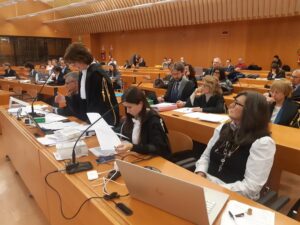
Perché? Scrive la Corte: «La valutazione circa la lontananza della condotta tenuta [dall’imputato, ndr] rispetto a quella standard (in altre parole: le azioni di Schmidheiny rispetto a quanto, a parere della procura, avrebbe dovuto fare, essendo perfettamente consapevole della cancerogenicità dell’amianto, ndr) non può non tenere conto della disciplina normativa vigente all’epoca della gestione dell’impresa da parte dell’imputato, nella quale l’attività di produzione dell’amianto era consentita e lecita (la legge che proibisce l’amianto è del 1992, ndr) e, inoltre, non vi erano limiti normativi circa l’utilizzazione dell’amianto». Prosegue la Corte: «Non vi è stata un’inerzia totale [da parte di Schmidheiny, ndr]: sì, era consapevole «della pericolosità dell’utilizzo dell’amianto, ma non [c’è stato] ancora un atteggiamento tale da ritenere che l’imputato non si sarebbe trattenuto dalla condotta illecita neppure se avesse avuto contezza della sicura verificazione dell’evento». Secondo i pm, Schmidheiny, consapevole dei rischi gravi per la salute, avrebbe dovuto sospendere l’attività. I giudici torinesi, invece, concordano con i colleghi di Novara ritenendo «sussistente l’ipotesi della colpa cosciente, derubricando l’accusa di omicidio doloso contestata».
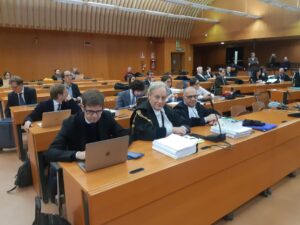
Vale la pena riportare altri stralci a proposito dell’elemento soggettivo.
«Deve ritenersi– scrive la Corte – che, tenuto conto delle conoscenze scientifiche e delle reali condizioni in cui operava lo stabilimento di Casale, l’imputato si sia rappresentato che dalla gestione del medesimo e dal suo mantenimento in vita potessero originare numerosi decessi, dovuti e favoriti dalla esposizione continuativa e massiccia dei lavoratori alle polveri di amianto e che, pur prevedendo tali gravi eventi, non abbia fatto quanto in suo potere per evitarli, sottovalutando l’entità del pericolo, fattori che consentono di ritenere integrata l’aggravante della colpa con previsione». Cioè, l’imputato ha agito «sorretto dall’elemento soggettivo della colpa cosciente (…). Avrebbe certamente potuto evitare o ridurre gli eventi verificatisi adottando maggiori cautele e anche ove necessario arrivando a evitare l’utilizzo dell’amianto, così impedendo gli eventi verificatisi».
E quindi? Secondo la Corte di Torino, l’imprenditore svizzero sapeva (che l’amianto è cancerogeno), non ha fatto quel che avrebbe potuto fare per impedire la diffusione indiscriminata di fibre nocive (adottando tecnologie o arrivando a sospendere l’uso di amianto), ma, secondo i giudici, non aveva la precisa volontà di uccidere. Quindi: omicidio colposo aggravato dalla colpa cosciente e non doloso.
INQUINAMENTO DELLO STABILIMENTO E FONTI ALTERNATIVE
La difesa, pur non potendo negare l’evidenza, e cioè
- che lo stabilimento Eternit (esteso su 96 mila metri quadrati) sia stato fonte di diffusione incontrollata di polvere d’amianto,
- così come è innegabile che lo siano stati i magazzini di piazza d’Armi,
- e ancor più l’area ex Piemontese (22 mila metri quadrati), sempre al Ronzone, dove si frantumavano a cielo aperto, 24 ore su 24, gli scarti di produzione provenienti da tutte le fabbriche italiane per reimmettere in produzione questi cascami attraverso il mulino Hazemag,
- e non potendo altresì negare che i camion, per lo più senza teloni di protezione, andavano avanti e indietro tra le case, a ridosso del centro, trasportando in una direzione i sacchi di amianto e in quella contraria i manufatti finiti (che ogni tanto cadevano per strada frantumandosi)
ecco, pur non potendo negare queste evidenze – emerse da molte testimonianze, oltre che da numerosi documenti ispettivi e da perizie -, la difesa aveva provato a spostare l’obiettivo sulle cosiddette «fonti alternative» di polverosità nella città di Casale e dintorni, anche note come «usi impropri».
Stiamo parlando degli scarti di produzione che, a lungo, furono utilizzati per fare rappezzi o sottofondi di strade e piazze, e dell’ancor più pericoloso «polverino», impiegato per coibentare i sottotetti e per livellare campi sportivi (di calcio, di bocce, degli oratori parrocchiali etc.), o cortili, aie, sagrati delle chiese.
Perché s’è detto che il polverino è «ancor più pericoloso»? Perché non si tratta solo della più generica «puvri», ma degli sfridi della lavorazione dei tubi, per i quali si usava la crocidolite o amianto blu, ben peggiore per i suoi effetti del già pericoloso crisotilo o amianto bianco, impiegato per realizzare le lastre (onduline).
Per molti anni, vari tipi di scarti di produzione uscirono dallo stabilimento e trovarono ampio impiego negli utilizzi sopra detti. La difesa ha insistito sul fatto che Schmidheiny aveva dato disposizione di vietare la distribuzione di polverino, anche se non c’è prova che questo ordine (scaturito, peraltro, dalla piena consapevolezza della cancerogenicità della crocidolite, di cui mai, però, fu informata la popolazione o le autorità locali) sia stato fatto rispettare.
Comunque, la tesi difensiva è che gli scarti uscirono dallo stabilimento prima della gestione di Stephan Schmidheiny (quindi lui non c’entrerebbe) e che, secondo la consulenza del professor Andrea D’Anna, causarono più inquinamento di quanto non ne avessero provocato – tutti quanti insieme – lo stabilimento (tra l’altro dotato di ventoloni senza filtri), gli ex magazzini, l’area ex Piemontese, la discarica sul Po, i trasporti su strada, le tute degli operai portate a casa impregnate di polvere perché la fabbrica non aveva lavanderia interna.
Questa ostinata «minimizzazione del valore delle emissioni derivanti dallo stabilimento Eternit» da parte di D’Anna non aveva convinto la Corte d’Assise di Novara e nemmeno ci ha creduto la Corte d’Assise d’Appello di Torino che, anzi, condivide «la valutazione svolta dai giudici di primo grado»; questi già avevano stigmatizzato la «ricostruzione “a tavolino” svolta dal consulente della difesa (prof. D’Anna) che [per la sua analisi] si è riferito a generici e astratti dati territoriali» (Google Maps, ndr). I giudici d’appello, ora, bocciano «la sopravvalutazione del consulente della difesa circa l’influenza dei fattori alternativi». E, ancora: «Vi è poi un dato decisivo, concreto e convincente circa l’inattendibilità delle conclusioni derivanti dai calcoli astratti effettuati dal consulente della difesa, i cui risultati inducono a ritenere un’incidenza massima delle fonti alternative e decisamente minima dell’attività produttiva, dal momento che successivamente alla bonifica dello stabilimento Eternit, avvenuta nel 2006, della sponda destra del Po, avvenuta negli anni 2000 e 2001, e dell’area dei Magazzini Eternit, tutti i successivi monitoraggi ambientali condotti dall’Arpa Piemonte dal 2007 non hanno rilevato particolari criticità e la concentrazione di fibre in atmosfera è diminuita a partire dalla chiusura dello stabilimento per poi diminuire ulteriormente con le fasi di bonifica e un miglioramento evidente era stato riscontrato dall’Arpa dopo l’anno 2007 quando non erano ancora state bonificate tutte le sorgenti improprie quali i battuti, le coperture e i sottotetti». A dire che, chiusa la fabbrica nel 1986 e fatte le successive bonifiche (dello stesso stabilimento più gli altri siti industriali pertinenti) l’inquinamento da amianto risultava diminuito, anche se non si era ancora intervenuti nei sottotetti e nei battuti.
Al contempo, spostando l’attenzione sul sito produttivo in attività, la Corte di Torino sottolinea che «le condizioni di dispersione dell’amianto non riguardavano solo l’interno, ma anche significativamente l’esterno». Richiama «testimonianze, unitamente ai rilievi svolti dai vari enti deputati» che «attestano inequivocabilmente la sussistenza di un forte inquinamento ambientale, dato anche dalla quantità e qualità del materiale trattato, oltre che dalla ininterrotta lavorazione dello stesso» (sono richiamate alcune perizie, i numerosi sopralluoghi e relative prescrizioni da parte degli enti ispettivi, le pressanti e rinnovate richieste di adeguamento da parte del consiglio di fabbrica).
Tuttavia, la Corte torinese per stabilire la corrispondenza tra l’inquinamento prodotto dallo stabilimento e l’insorgenza della malattia (specialmente nelle «vittime ambientali»), si sofferma sulle distanze dal sito produttivo. I consulenti del pm Magnani e Mirabelli – anche sulla base degli studi epidemiologici effettuati nell’area di Casale – avevano indicato che fosse rilevante un’esposizione all’amianto anche a 10 chilometri; la Corte d’Assise di Novara si era concentrata invece su un massimo di 5 chilometri. I giudici d’Appello, a loro volta, pur attribuendo a quegli studi «una valenza significativa», riducono la distanza a 2 chilometri, ritendendo convincente la consulenza della difesa svolta dal professor Gary Marsh. L’esperto americano aveva illustrato studi internazionali secondo i quali non si sono «rilevate associazioni significative tra mesotelioma e distanze superiori a 2 chilometri da un impianto di cemento amianto». Ecco perché, oltre ai casi per i quali già la Corte di primo grado aveva assolto Schmidheiny, se ne sono aggiunti altri da parte della Corte di secondo grado, che scrive: «In assenza di dimostrazioni contrarie, non si può ritenere dimostrata, oltre ogni ragionevole dubbio, l’incidenza causale delle emissioni derivanti dall’attività produttiva per le residenze che superano la distanza di 2000 metri, fermo restando che le fonti alternative esistenti entro tale ambito devono essere considerate concorrenti».
NESSO DI CAUSALITA’
Quali persone, indicate nel capo di imputazione, sono state vittime, secondo la Corte d’Assise d’Appello, della condotta criminosa imputata all’imprenditore svizzero?
Giuridicamente è l’aspetto più delicato e controverso.
Che cos’è il nesso di causalità?
È ciò che permette di collegare un evento dannoso (in questo caso le malattie e morti per mesotelioma) a una determinata condotta (in questo caso, quella dell’imputato Schmidheiny, capo gestore della fabbrica d’amianto): si tratta di stabilire, oltre ogni ragionevole dubbio, se le azioni commesse o le omissioni abbiano prodotto come conseguenza quell’esplosione di vittime di mesotelioma.
Per accertare il nesso di causalità, occorre esaminare le cosiddette «leggi di copertura», cioè leggi scientifiche che attestino la probabilità che un determinato evento si verifichi in seguito a una certa condotta.
La Corte, dunque, si è impegnata a verificare l’esistenza di una «legge di copertura» per affermare che l’evento (malattia-morte) è stato conseguenza dell’azione (o omissione) da parte dell’imputato e che, senza quell’azione/omissione, le vittime non si sarebbero ammalate e non sarebbero morte.
La questione della scienza che entra nei tribunali è spinosa non soltanto nel caso del processo Eternit Bis.
La Cassazione se n’è già occupata e la Corte d’Assise d’Appello di Torino ha aderito scrupolosamente ai criteri indicati in una sentenza del 2018, nel capitolo intitolato «Il giudice, le parti e il sapere esperto».
Che cosa dice la Suprema Corte? «Al giudice è precluso farsi creatore della legge scientifica necessaria all’accertamento; poiché egli è portatore di una “legittima ignoranza” a riguardo delle conoscenze scientifiche, si tratta di valutare l’autorità scientifica dell’esperto che trasferisce nel processo la sua conoscenza della scienza; ma anche di comprendere, soprattutto nei casi più problematici, se gli enunciati che vengono proposti trovano comune accettazione nella comunità scientifica». Non solo; la Cassazione ha fornito indicazioni anche sulla credibilità dei consulenti chiamati in aula di giustizia: «E’ di preminente rilievo – scrive – l’identità, l’autorità indiscussa, l’indipendenza del soggetto che gestisce la ricerca, e le finalità per le quali si muove».
In sostanza, il giudice non è uno scienziato e sarebbe presuntuoso da parte sua decidere qual è la legge scientifica idonea a spiegare determinati accadimenti. E dunque? Deve innanzi tutto interpellare gli esperti che illustrino le leggi scientifiche e poi scegliere attenendosi all’autorevolezza e alla massima condivisione della comunità scientifica.
Pertanto, per riconoscere un imputato responsabile del reato contestato, è fondamentale che «sia acquisito, oltre ogni ragionevole dubbio, che la legge di copertura [individuata] sia riconosciuta dalla comunità scientifica come quella maggiormente accreditata. Il che non richiede di escludere l’esistenza di ogni tesi avversa o divergente, ma impone soltanto di dare dimostrazione della marginalità delle altre tesi in circolazione».
Riportata questa rigorosa premessa, i giudici torinesi condividono l’affermazione della professoressa Irma Dianzani, secondo cui «il processo di cancerogenesi multistadiale (cioè lo sviluppo del mesotelioma attraverso varie fasi, nel tempo, ndr) è quello a oggi accertato dalla comunità scientifica e viene riportato sui più consultati libri di testo di Medicina».
Inoltre, si associano al principio secondo cui “tutte le dosi contano” che «è espressione della relazione dose-risposta, ove per dose si intende l’esposizione cumulativa comprensiva di intensità e durata. La relazione dei consulenti del pm – prof. (Corrado) Magnani e dottor (Dario) Mirabelli – dà conto nel dettaglio degli studi su cui si fonda tale impostazione, per arrivare ad affermare che l’amianto come cancerogeno completo incide sia sulla fase di iniziazione (cioè sul momento in cui la prima cellula si ammala) sia sulla fase di promozione del tumore (cioè sulla moltiplicazione delle cellule maligne fino alla formazione del tumore, autonomo nella crescita, ma ancora asintomatico, ndr)». Vengono richiamate le affermazioni della prof. Dianzani: «L’incidenza dei tumori dovuti all’esposizione aumenta sia con il protrarsi [dell’esposizione] che con l’aumento della sua intensità e non esistono né una soglia di esposizione al di sotto della quale vi sia assenza di effetto né un limite oltre il quale ulteriori incrementi di esposizione siano privi di effetti».
Che cosa vuol dire nel caso specifico? Che in un individuo il processo cancerogeno può essere iniziato anche prima del periodo di gestione di Schmidheiny (per via di esposizioni all’amianto avvenute negli anni precedenti al 1976), ma le dosi aggiuntive, respirate nel decennio in cui lui era a capo di Eternit, hanno comunque incrementato l’evoluzione della lesione.
Non solo. «Strettamente correlato al principio secondo cui “tutte le dosi contano” – si legge nelle motivazioni della sentenza – è il principio dell’effetto anticipatore, che descrive qual è in concreto l’incidenza causale delle esposizioni successive, individuata, sulla base di studi condivisi, nella accelerazione della malattia e, conseguentemente, nell’anticipazione della morte». A dire che, quand’anche la mutazione delle cellule sane in cellule cancerogene sia già partita nell’organismo, se continua l’esposizione all’amianto lo sviluppo del mesotelioma subisce un’accelerazione anticipando così la morte, che sarebbe invece avvenuta anni dopo.
I giudici riprendono anche lo stralcio di un documento pubblicato nel 2020 dall’Associazione Italiana di Epidemiologia secondo cui «l’aumento dell’esposizione cumulativa ad amianto comporta l’aumento del rischio tumorale».
Ma i consulenti della difesa hanno sempre obbiettato che si è trattato di affermazioni basate sulla epidemiologia, che è una scienza statistica, non applicabile, a loro avviso, al singolo individuo.
I consulenti del pm, invece, hanno replicato a loro volta che è appunto sulla scienza epidemiologica che si basa, ad esempio, la ricerca farmacologica, e che la dimostrazione di efficacia delle terapie – studiate, testate e alla fine utilizzate per i singoli individui – parte proprio dagli studi epidemiologici.
Nel contradditorio sulla efficacia dell’epidemiologia, mancava la prova biologica, che si è ottenuta «in un recentissimo studio di laboratorio [Studio di Faradhman], illustrato dal prof. Magnani. Gli esiti sono stati pubblicati nel 2023 e quindi non c’erano ancora quando si è svolto il processo Eternit Bis di primo grado».
È lo studio effettuato su topi di laboratorio. «I topi sono stati “ingegnerizzati” (cioè il dna è stato modificato a scopo di ricerca, ndr) in modo che tutti fossero destinati a morire di mesotelioma; indi, sono stati divisi in due gruppi e nei topi di uno dei due gruppi è stato iniettato amianto nella pleura (il prof. Magnani ha spiegato che l’effetto dell’iniezione è identico a quello dell’inalazione)».
Che cosa hanno osservato i ricercatori? Che «tutti i topi del primo e del secondo gruppo sono morti a causa del mesotelioma, ma i topi appartenenti al gruppo trattato con iniezioni di amianto sono morti prima rispetto ai topi del secondo gruppo».
Poi, «i ricercatori hanno anche effettuato l’autopsia dei topi, riscontrando come [in quelli trattati con la dose aggiuntiva di amianto] la malattia fosse più diffusa sia nella sede polmonare sia sulla parete toracica che è quella da cui il mesotelioma parte».
Pertanto, «i risultati dello studio di Faradhman forniscono prova di un fenomeno biologico del tutto corrispondente ai dati elaborati sulla base dell’osservazione epidemiologica», cioè le dosi aggiuntive di esposizione all’amianto contano e fanno ammalare prima. Il prof. Magnani, a domanda specifica della Corte, ha risposto senza esitazione: «Mi sento di dire che è una legge universale, in scientifichese è una legge e basta»: in caso di aumento di intensità e/o durata dell’esposizione, immancabilmente nei soggetti destinati ad ammalarsi di mesotelioma si verifica un’accelerazione della malattia.
CONCLUSIONI
Chiare e dirimenti le conclusioni della Corte d’Assise d’Appello, in cui ha enunciato le «leggi di copertura riconosciute dalla comunità scientifica come maggiormente accreditate» attraverso cui ha poi esaminato caso per caso e deciso, per ognuno, se la responsabilità della loro morte fosse riconducibile all’imputato.
Eccole:
- il mesotelioma è malattia cagionata da esposizione ad amianto:
- il processo di cancerogenesi è processo multistadiale;
- l’amianto è sostanza cancerogena in grado di agire su diverse fasi del processo di cancerogenesi;
- ai fini dell’insorgenza del mesotelioma, rilevano [sono determinanti, ndr] sia la durata sia l’intensità dell’esposizione subita fino al completamento della fase di induzione [cioè quando il cancro si è ormai sviluppato e, benché non ancora visibile e diagnosticabile, è irreversibile]
- a un aumento dell’esposizione corrisponde un’accelerazione della malattia e, conseguentemente, l’anticipazione dell’evento morte;
- non è individuabile il momento in cui si completa l’induzione, che segna il limite delle esposizioni rilevanti;
- nella comunità scientifica è condivisa la stima della durata della fase preclinica [che va dalla fine dell’induzione alla diagnosi – quando il mesotelioma diventa visibile e diagnosticabile] in 10 anni.
VERDETTO FINALE
Pertanto, la Corte d’Assise d’Appello ha riconosciuto Stephan Schmidheiny responsabile del reato di omicidio colposo pluriaggravato e lo ha considerato colpevole per 91 vittime, rispetto agli iniziali 392 casi elencati nel capo di imputazione, che si sono ridotti per effetto delle prescrizioni e delle assoluzioni. Da qui il motivo della conseguente riduzione matematica della condanna da 12 anni di reclusione (in primo grado) a 9 anni e mezzo di reclusione (in secondo grado).
Le prescrizioni: tra la sentenza di Novara del 7 giugno 2023 e quella d’appello pronunciata il 17 aprile di quest’anno, 19 casi hanno maturato i tempi di prescrizione cui la Corte di Torino ne ha aggiunti altri 8 che, secondo i propri conteggi, risultavano già prescritti prima del giugno 2023.
Le assoluzioni: già la Corte di Novara (per i motivi spiegati sopra, filtrati dai criteri indicati nel paragrafo delle Conclusioni) aveva assolto Schmidheiny in riferimento a 46 casi di morte; la Corte d’Assise d’Appello ha aggiunto l’assoluzione per altri 29 casi, restringendo le maglie della griglia da 10 chilometri di distanza dallo stabilimento a 2 soltanto (anche se i 10 chilometri indicati dai consulenti della procura hanno, per ammissione della stessa Corte, «una valenza significativa, data dagli studi statistici condotti nella zona di Casale Monferrato»).
TRANSLATION by VICTORIA FRANZINETTI
Report by Silvana MOSSANO
The Turin Court of Appeal’s verdict is over 600 pages long: it explains the reasons why it sentenced Stephan Schmidheiny to nine and a half years– guilty of manslaughter for the death of the people of Casale who died of mesothelioma. Half the verdict consists of the files with a detailed study of each individual case: every life cut short by asbestos, suffocated by the puvri, as it is called in local dialect. When you say puvri, everyone here understands.
In its verdict, the Court states that it was not possible to establish in all cases whether the disease originated from the criminal conduct of the defendant. Why?
- In some cases because the mesothelioma diagnoses were considered “probable” and not “certain” – in a courtroom, you need to be strong not to burst into tears when you hear that the diagnosis is uncertain. Those who have lost someone know how things went: they had already seen the verdict written first in a medical record and then written on a gravestone;
- sometimes because it was not possible to establish beyond reasonable doubt that the fibres inhaled in the decade between 1976 and 1986 (when Schmidheiny was head of Eternit) were decisive in causing mesothelioma, and
- sometimes because those who developed the illness lived more than two kilometres from the Eternit plant, which was located between the houses of the populous Ronzone district and close to the city centre.
In summary, in deciding which deaths (listed in the indictment) were, in the Court’s opinion, attributable to Schmidheiny’s conduct which he was convicted him and which were not, in the Court’s opinion, attributable to Schmidheiny (for which it acquitted him),ì. Cases were sorted one by one using the following criteria:
- diagnosis of mesothelioma
- identification of the causal link
- relevance of competing alternative sources (i.e., sites containing dust or asbestos waste in attics, streets, courtyards, identified in the vicinity of the victims’ homes)
- it ruled out attributing the cause of mesothelioma to Eternit’s management in cases where the distance between the home and the factory exceeded 2,000 metres
* * *
In my analysis I will consider the crucial points that have sparked widespread debate and drastic opposition in the Eternit Bis trial. It began as a single case, brought by the Turin Public Prosecutor with an indictment of wilful (i.e., voluntary) murder for hundreds of mesothelioma deaths ascribed to Swiss entrepreneur Stephan Schmidheiny. For decades, his family (and he himself) owned and managed Eternit, one of the world’s largest industries engaged in the extraction and production of asbestos products, in Italy and several other countries.
I shall carry out this analysis by following the reasoning of the Turin judges who responded to the issues raised both the prosecution and the defence in their appeals against the first-instance judgement handed down by the Court of Assizes of Novara on 7 June 2023. I will do so by quoting excerpts from the verdict by the Court of Appeal of Assizes (14 October – the verdict was read on 14 April 2025).
These are the points to be examined in depth:
- the defendant’s duty of care (posizione di garanzia)
- personal or subjective aspect
- pollution from the plant and from alternative sources
DUTY OF CARE
To simplify: was it Stephan Schmidheiny who decided whether, what and how big an investment was required to keep the inside and outside of the working environment safe? Did he order managers how to behave, how to act and what to say in their dealings with workers, trade unions, politicians and journalists? In essence: was he the head of Eternit?
The Court of Appeal wrote that several pieces of evidence ‘converge in indicating a top-down organisational model headed by the current defendant, who not only chose to continue production despite being aware of the dangerous nature of the substance being handled, but also continuously interfered in the management of the Italian plants, including the Casale plant, in order to ensure that the corporate policies decided at central level were implemented at local level, with particular reference to the management of the risk of exposure to asbestos‘.
In other words, yes, Stephan Schmidheiny was the boss who decided and ordered what was to be done.
Among the arguments proving his direct management, the Turin judges referred to:
- the much-cited 1976 Neuss conference, where Schmidheiny summoned Eternit’s top global executives, who were shocked by what their boss reported about the dangers of asbestos
- and the subsequent “AUSL 76 operating manual”, drawn up following the Neuss conference, containing “clear and unambiguous operating instructions defining the responses to be used in specific cases”: i.e. how plant managers should respond to those who asked uncomfortable questions such as ‘why do you continue to produce with asbestos despite knowing that it is dangerous? What are you doing to protect workers and their families? Why are you still using blue asbestos?”. The answers to be given ranged from “asbestos cement can certainly be considered a non-hazardous material; the decisive factor is cigarette smoke; there is no danger to families‘.
PERSONAL OR SUBJECTIVE ASPECT
The question is: was the defendant’s conduct intentional or negligent?
In other words, is he guilty of voluntary manslaughter (as claimed by the prosecution, which based its main ground for appealing the first instance judgment on this complaint) or negligent manslaughter?
The Court of Assizes of Novara had reclassified the offence from intentional to negligent. This was also confirmed on appeal.
What does the Court of Turin write in this regard in response to the prosecution’s appeal?
“The public prosecutor’s appeal, which complains about the erroneous reclassification of the disputed facts from aggravated intentional homicide to aggravated negligent homicide, cannot be upheld”.
Why? The Court writes: ‘The assessment of the distance between the conduct [of the defendant, ed.] and the standard (in other words: Schmidheiny’s actions compared to what, in the opinion of the prosecution, he should have done, being perfectly aware of the carcinogenicity of asbestos, my note) cannot fail to take into account the regulations in force at the time of the management of the company by the defendant, in which the production of asbestos was permitted and lawful [the law prohibiting asbestos dates back to 1992, my note] and, furthermore, there were no regulatory limits on the use of asbestos‘. The Court continues: “There was no total inertia [on the part of Schmidheiny, my note]: yes, he was aware ”of the dangers of using asbestos, but there was not yet an attitude such as to consider that the defendant would not have refrained from unlawful conduct even if he had been aware of the certain occurrence of the event‘. According to the prosecutors, Schmidheiny was aware of the serious health risks, and should have suspended the activity. The Turin judges, on the other hand, agree with their colleagues in Novara, considering “conscious negligence [is] valid, downgrading the charge of intentional homicide”.
Let me list further excerpts on the subjective element.
“It must be considered,” writes the Court, ‘that, taking into account the scientific knowledge and the actual conditions in which the Casale plant operated, the defendant realised that the management and maintenance of the plant could cause numerous deaths, due to and facilitated by the continuous and massive exposure of workers to asbestos dust and that, despite foreseeing such serious events, he did not do everything in his power to prevent them, underestimating the extent of the danger, factors which allow us to consider the aggravating circumstance of culpable negligence with foresight to be established“. In other words, the defendant acted” supported by the subjective element of conscious negligence (…). He could certainly have avoided or reduced the events that occurred by taking greater precautions and, where necessary, by avoiding the use of asbestos, thus preventing the events that occurred‘.
So what? According to the Court of Turin, the Swiss entrepreneur knew (that asbestos is carcinogenic), did not do what he could have done to prevent the indiscriminate spread of harmful fibres (by adopting technologies or discontinuing the use of asbestos), but, according to the judges, did not have the specific intention to kill. Therefore: manslaughter aggravated by conscious negligence and not intentional.
POLLUTION FROM THE FACTORY AND ALTERNATIVE SOURCES
The defence was unable to deny the evidence, namely
- that the Eternit factory (96,000 square metres) was a source of uncontrolled spread of asbestos dust,
- just as it is undeniable that the warehouses in Piazza d’Armi were,
- and even more so the former Piemontese area (22,000 square metres), also in Ronzone, where production waste from all Italian factories was crushed in the open air 24 hours a day to be reused in production after going through the Hazemag mill,
- lorries, mostly without protective tarpaulins, travelled back and forth between the houses, close to the centre, transporting bags of asbestos in one direction and finished products in the other (which occasionally fell onto the road and shattered)
While unable to deny this evidence – which emerged from many testimonies, as well as numerous inspection and expert reports – the defence tried to shift the focus to the so-called “alternative sources” of dust in the city of Casale and its surroundings, also known as “improper uses”.
We are referring to production waste that was used for a long time to patch or underlay roads and squares, and the even more dangerous “dust”, used to insulate attics and level sports fields (football, bocce, parish halls, etc.), courtyards, farmyards and churchyards.
Why is dust said to be “even more dangerous”? Because it was not just the more generic puvri, but scraps from the manufacture of pipes, where crocidolite or blue asbestos was used, which was much worse in its effects than the already dangerous chrysotile or white asbestos used to make sheets (corrugated).
For many years, various types of production waste left the factory and were widely used in the above-mentioned applications. The defence insisted that Schmidheiny had given instructions to prohibit the distribution of powder, although there is no evidence that this order (which arose from full awareness of the carcinogenicity of crocidolite, of which, however, the population or local authorities were never informed) was enforced.
In any case, the defence’s argument is that the waste left the factory before Stephan Schmidheiny took over its management (so he had nothing to do with it) and that, according to Professor Andrea D’Anna’s expert opinion, it caused more pollution than the factory (which, among other things, was equipped with large fans without filters), the former warehouses, the former Piemontese area, the landfill on the Po River, road transport, and the workers’ overalls taken home impregnated with dust because the factory did not have an internal laundry.
This stubborn “minimisation of the value of emissions from the Eternit factory” by Prof D’Anna did not convince the Court of Assizes of Novara, nor the Court of Assizes of Appeal of Turin, which, on the contrary, agreed with “the assessment made by the judges of first instance”; the latter had already condemned the “armchair reconstruction carried out by the defence consultant (Prof. D’Anna), who [for his analysis] referred to generic and abstract territorial data” (Google Maps, my comment). The appeal judges now rejected “the defence consultant’s overestimation of the influence of alternative factors”. And again: ‘There is also decisive, concrete and convincing evidence regarding the unreliability of the conclusions derived from the abstract calculations made by the defence consultant, the results of which lead to the conclusion that the impact of alternative sources was maximum and that of production activity was decidedly minimal, since, following the remediation of the Eternit factory in 2006, the right bank of the Po River in 2000 and 2001, and the Eternit warehouse area, all subsequent environmental monitoring conducted by Arpa Piemonte since 2007 have not revealed any particular critical issues and the concentration of fibres in the atmosphere has decreased since the closure of the factory and then decreased further with the remediation phases, and a clear improvement was found by Arpa after 2007 when not all improper sources such as beaten surfaces, roofing and attics had yet been remediated‘. In other words, after the factory closed in 1986 and the subsequent remediation work was carried out (on the factory itself and other relevant industrial sites), asbestos pollution had decreased, even though no work had yet been done on the attics and floors.
At the same time, shifting its attention to the active production site, the Court of Appeal of Assizes in Turin emphasised that “the conditions of asbestos dispersion did not only affect the inside, but also significantly affected the exterior”. It refers to “testimonies, together with the findings of the various competent bodies” which “unequivocally attest to the existence of severe environmental pollution, given the quantity and quality of the material processed, as well as the uninterrupted processing of the same” (reference is made to a number of expert reports, numerous inspections and related prescriptions by the inspection bodies, and the pressing and repeated requests for compliance by the works council).
However, to establish the link between the pollution produced by the plant and the onset of the disease (especially in “environmental victims”), the Turin Court focused on the distances from the production site. Considering the epidemiological studies carried out in the Casale area – the expert witnesses of Public Prosecution, Drs Magnani and Mirabelli had indicated that exposure to asbestos was significant even at a distance of 10 kilometres; the Court of Assizes of Novara, on the other hand, had focused on a maximum of 5 kilometres. The judges of the Court of Appeal of Assizes, in turn, while attributing “significant value” to those studies, reduced the distance to 2 kilometres, considering the defence expert, Professor Gary Marsh’s opinion to be convincing. The US expert had presented international studies according to which there were “no significant associations between mesothelioma and distances greater than 2 kilometres from an asbestos cement plant”. This is why, in addition to the cases Schmidheiny had already been acquitted for by the Court of Assizes, others were eliminated by the court of Appeal of Assizes: ‘ In the absence of evidence to the contrary, the causal impact of emissions from production activities on residences exceeding a distance of 2,000 metres cannot be considered proven beyond reasonable doubt, it being understood that alternative sources existing within that area must be considered concurrent‘.
CAUSAL LINK
Which cases, named in the indictment, were victims, according to the Court of Appeal, of the criminal conduct attributed to the Swiss businessman?
Legally, this is the most sensitive and controversial aspect.
What is the causal link?
It is what causes a harmful event (in this case, mesothelioma-related illnesses and deaths) to be linked to a specific conduct (in this case, that of the defendant Schmidheiny, head manager of the asbestos factory): it is a matter of establishing, beyond reasonable doubt, whether the actions committed or omissions resulted in the explosion of mesothelioma victims.
In order to establish causality, it is necessary to examine the so-called “covering law”, i.e. the scientific laws that attest to the probability of a certain event occurring as a result of a certain conduct.
The Court verified the covering law and stated that the event (illness-death) was the consequence of the action (or omission) on the part of the defendant and that, without that action/omission, the victims would not have fallen ill and died.
The issue of science entering the courts is a thorny one, and not only in the Eternit Bis trial.
The Court of Cassation has already dealt with it, and the Turin Court of Appeal has scrupulously adhered to the criteria set out in a 2018 ruling, in the chapter entitled “The judge, the parties and expert knowledge”.
What does the Court of Cassation say? “The judge is precluded from creating the scientific law necessary for the assessment; since he is the bearer of ‘legitimate ignorance” with regards to scientific knowledge, it is a matter of assessing the scientific authority of the expert who transfers his/her knowledge of science to the trial; but also of understanding, especially in the most problematic cases, whether the statements that are proposed are commonly accepted in the scientific community‘. Not only that, but the Court of Cassation also provided guidance on the credibility of consultants called to court: “”, it writes, “The identity, undisputed authority and independence of the person conducting the research, and the purposes for which they are acting are of the utmost importance”.
In essence, judges are not scientists, and it would be inappropriate on their part to decide which scientific law is the most fitting to explain certain events. In this case what should judges do? They must first consult experts who can explain the scientific laws and then decide based on the authority and maximum consensus of the scientific community.
Therefore, to find a defendant guilty, it is essential that “that the [identified] covering law is recognised by the scientific community as the most accredited, beyond reasonable doubt. This does not require the exclusion of any opposing or divergent theories but only requires demonstration of the marginality of the other theories in circulation”.
Having stated this rigorous premise, the Turin judges agreed with Professor Irma Dianzani’s statement that “the process of multistage carcinogenesis (i.e. the development of mesothelioma through various stages over time, ed.) is that currently established by the scientific community and reported in the most widely consulted medical textbooks”.
Furthermore, they agreed with the principle that “all doses matter”, which ‘is an expression of the dose-response relationship, where dose means cumulative exposure including intensity and duration. The report by the public prosecutor’s expert witnesses – Prof. (Corrado) Magnani and Dr (Dario) Mirabelli – gives a detailed account of the studies on which this approach is based, concluding that asbestos, as a complete carcinogen, affects both the initiation phase (i.e. the moment when the first cell becomes diseased) and the promotion phase of the tumour (i.e. the multiplication of malignant cells until the formation of the tumour, which is autonomous in its growth but still asymptomatic, ed.) “.Prof. Dianzani was quoted saying: ”The incidence of tumours due to exposure increases both with the duration [of exposure] and with the increase in its intensity, and there is neither a threshold of exposure below which there is no effect nor a limit beyond which further increases in exposure have no effect‘.
What does this mean in these cases? It means that the carcinogenic process may have begun in an individual even before Schmidheiny’s period of management (due to asbestos exposure in the years prior to 1976), but the additional doses inhaled during the decade in which he was head of Eternit nevertheless increased the progression of the lesion.
Not only that. “Closely related to the principle that ‘all doses count’ is the principle of the anticipation ì, which describes the actual causal impact of subsequent exposures, identified, on the basis of shared studies, in the acceleration of the disease and, consequently, in the anticipation of death”. This means that even if the mutation of healthy cells into cancerous cells had already begun in the body, continued exposure to asbestos accelerates the development of mesothelioma, thus bringing forward death, which would otherwise have occurred years later.
The judges also referred to an excerpt from a document published in 2020 by the Italian Epidemiology Association, according to which “increased cumulative exposure to asbestos leads to an increased risk of cancer”.
However, the defence consultants have always objected that these statements are based on epidemiology, which is a statistical science that, in their opinion, cannot be applied to individuals.
The public prosecutor’s consultants, on the other hand, replied that it is precisely epidemiological science that forms the basis of, for example, pharmacological research, and that the demonstration of the effectiveness of therapies – studied, tested and ultimately used for individuals – starts precisely from epidemiological studies.
In the debate on the effectiveness of epidemiology, biological evidence was lacking, but this was obtained “in a very recent laboratory study [Faradhman study], illustrated by Prof. Magnani. The results were published in 2023 and were therefore not yet available when the Eternit Bis first instance trial took place”.
This is a study carried out on laboratory mice. ‘The mice were ‘engineered’ (i.e. their DNA was modified for research purposes, ed.) so that they were all destined to die of mesothelioma; then they were divided into two groups and the mice in one of the two groups were injected with asbestos into the pleura [Prof. Magnani explained that the effect of the injection is identical to that of inhalation]’.
What did the researchers observe? That “all the mice in the first and second groups died of mesothelioma, but the mice in the group treated with asbestos injections died earlier than the mice in the second group”.
Then, “the researchers also performed autopsies on the mice, finding that [in those treated with the additional dose of asbestos] the disease was more widespread both in the lungs and on the chest wall, which is where mesothelioma starts”.
Therefore, “the results of Faradhman’s study provide evidence of a biological phenomenon that fully corresponds to the data processed on the basis of epidemiological observation”, i.e. additional doses of asbestos exposure matter and cause the disease to develop earlier. Prof. Magnani, in response to a specific question from the Court, replied without hesitation: “I would say that it is a universal law; in scientific terms, it is simply a law”: in the event of an increase in the intensity and/or duration of exposure, the disease inevitably accelerates in individuals destined to develop mesothelioma.
CONCLUSIONS
The conclusions of the Court of Appeal are clear and decisive, setting out the “covering law recognised by the scientific community as most accredited”, which it then examined on a case-by-case basis and decided, for each case, whether the responsibility for their deaths could be attributed to the defendant.
These are as follows:
- mesothelioma is a disease caused by exposure to asbestos:
- the process of carcinogenesis is a multi-stage process;
- asbestos is a carcinogenic substance capable of acting on different stages of the carcinogenesis process;
- for the onset of mesothelioma, both [are decisive, ed.] the duration and intensity of exposure until the completion of the induction phase [i.e. when the cancer has already developed and, although not yet visible and diagnosable, is irreversible]
- an increase in exposure corresponds to an acceleration of the disease and, consequently, an earlier death;
- it is not possible to identify the moment when induction is complete, which marks the limit of relevant exposure;
- the scientific community agrees that the duration of the preclinical phase [from the end of induction to diagnosis – when mesothelioma becomes visible and diagnosable] is 10 years.
FINAL VERDICT
Therefore, the Court of Appeal found Stephan Schmidheiny guilty of aggravated manslaughter and considered him guilty for 91 victims, compared to the initial 392 cases listed in the indictment, which were reduced as a result of statutes of limitations and acquittals. Hence the consequent mathematical reduction of the sentence from 12 years’ imprisonment (in the first instance) to 9 and a half years’ imprisonment (in the second instance).
The statute of limitations: between the Novara ruling of 7 June 2023 and the appeal ruling handed down on 17 April this year, 19 cases had reached the statute of limitations, to which the Turin Court added another 8 which, according to its calculations, had already reached the statute of limitations before June 2023.
The acquittals: the Court of Novara (for the reasons explained above, filtered by the criteria indicated in the Conclusions paragraph) had already acquitted Schmidheiny in relation to 46 cases of death; the Court of Appeal added the acquittal for another 29 cases, narrowing the grid from 10 kilometres away from the plant (“despite having significant value, given the statistical studies conducted in the Casale Monferrato area”).

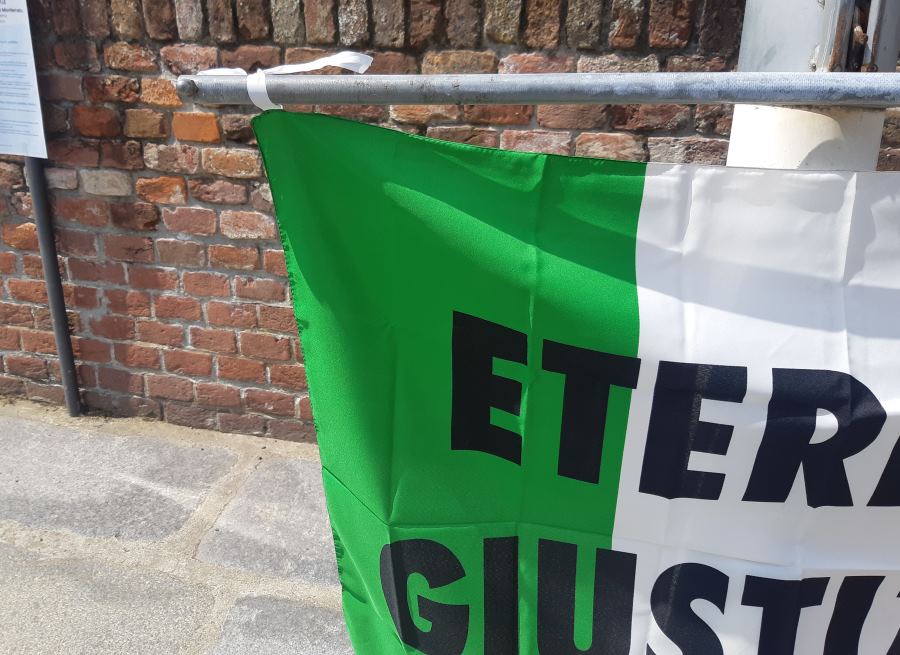

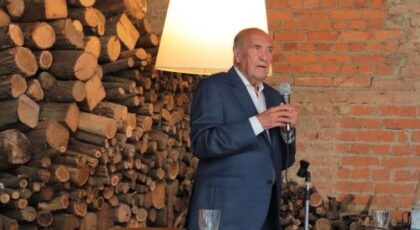
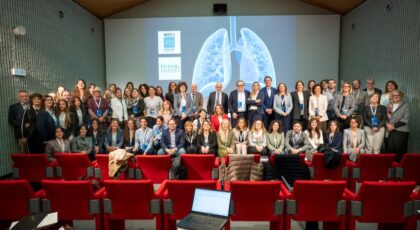

A mio parere la tristissima verità e’ che imprenditori e dirigenti aziendali colpevolmente e scandalosamente perché pur consapevoli della pericolosità dell’amianto hanno privilegiato il business delle aziende alla salute e alla vita dei lavoratori. In poche parole dal loro operato l’unica conclusione era che anche se i lavoratori si ammalano o addirittura muoiono si possono sostituire e quindi perché rinunciare alla reddivita’ dell’azienda per tutelare la salute dei lavoratori?????
Grazie Silvana, sei riusciuta a rendere estremamente chiari passaggi complessi anche per gli addetti ai lavori (mi riferisco in particolare all’illustrazione del nesso di causalità e al ragionamento che la Corte ha fatto coerentemente con la pronuncia della Cassazione del 2018.
Un abbraccio
rosalba
Grazie. Puntuale , precisa e preziosa come sempre.
Grazie mille Silvana!!! Come sempre un lavoro molto utile per l’ottimo lavoro di estrapolazione e sintesi dei passaggi più significativi.
Utilissimo riassunto, necessario per capire anche altre sentenze. grazie per aver speso fatica e ingegno per informare tutti